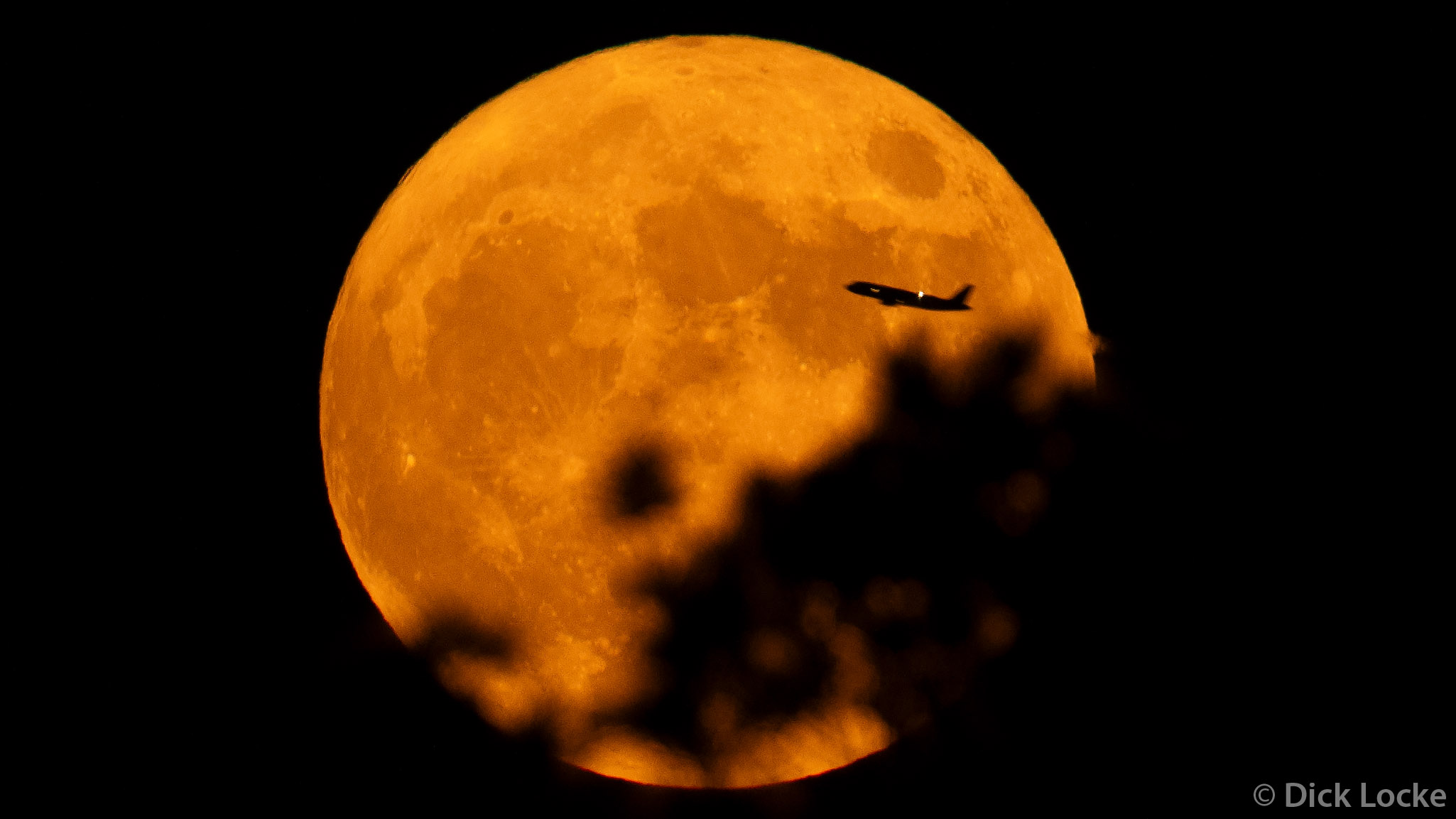
Blue Supermoon with a Bonus Jet Crossing (8/30/2023)

How about a Blue Supermoon (blue because it's the second full moon in the calendar month, super because it's the biggest of the year) rising in the trees just after sunset with a bonus jet crossing! Fist time I've captured an aircraft against the Moon. Nikon Z9, 500mm f4 lens at f4, 1/50s at ISO 400, 26 minutes after local moonrise. Note the exhaust from the jet distorting the atmosphere behind it on the edge of the moon.

From 2/27/2010. What's up with the crazy color? This is the result of a special image processing technique to emphasize the differences in color. What do you think? The Lab Curves technique is described about halfway down on this page. Susan asked about the "asterisk features." See this APOD page regarding lunar rays for more info on the asterisks.
According to "The Sky" the moon above was 99.36% full and per Lunar Phase Pro was 222, 360 miles away, which is closer than average. You can make out a tiny bit of shadow detail on the lower & left part. We had some pleasant weather and clear skies Saturday, 2/27/2010. I took advantage of the opportunity to verify the proper imaging configuration using the 1.6x extender, and I also worked through some issues with new camera drivers and capture software. Much better to do that in the back yard than on a mountain 1000 miles away! Takahashi TOA 130 Telescope (a 5" APO refractor) with 1.6 extender, AP 900GTO mount, and QHY8 CCD Camera & normal workflow. The image was exposed for the shortest time the CCD camera will allow; not sure what that is exactly!

The Moon and Jupiter's close encounter on 1/21/13 is captured in the composite image above. 2/03: This picture was winner of the Yahoo Group "digital_astro" January 2013 Challenge for "any solar system object." The Moon and Jupiter are from a single frame, while Jupiter's moons are taken from a different exposure. Click on one of the larger versions below to see this close-up. Details: Nikon D7000 camera with Takahashi FSQ-85 telescope on a tripod. Main image 1/400s at ISO 200, while Jupiter's moons were 1/80s at ISO 1000. Focus was via the the D7000's focus indicator while aimed at Jupiter.
 Super-Huge Conjunction Version |
 Medium-Sized Conjunction Version |
|
|
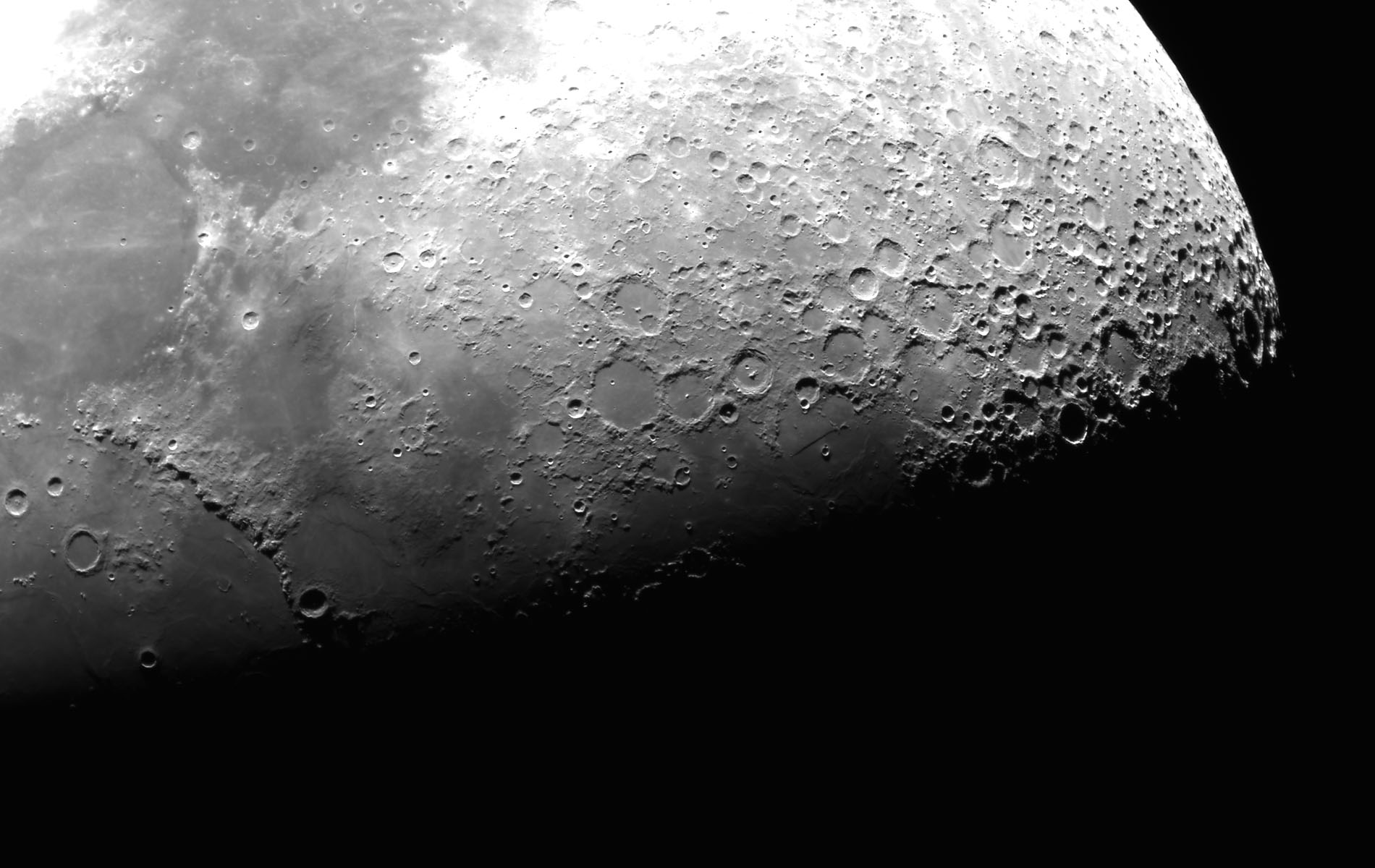
The image above is from 4/11/11, using the Takahashi TOA 130 Telescope and 1.6x extender and the SBIG ST-8300 CCD camera using a blue filter at about .1 sec exposure.

Thin Crescent Moon Sets into the Trees, 3/8/2008 HAS Site
The moon above was about 32 hours old, about 2.5% illuminated.
 More Super Thin Moon Images Here.
More Super Thin Moon Images Here.
This moon picture is on the cover of a book!
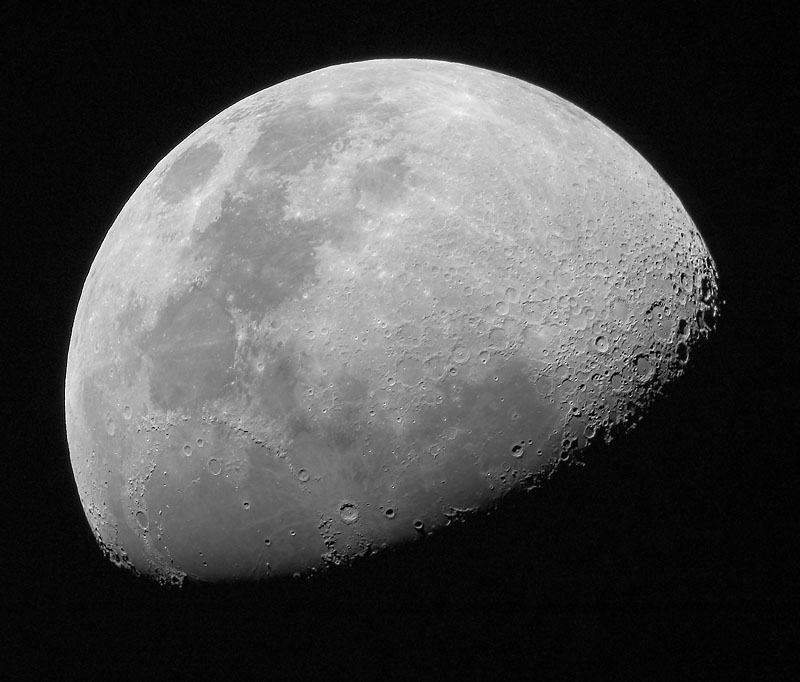
Above: Moon Picture, 3/30/2004
1/80 second, Tak FS-102 telescope, Nikon D100 digital camera, Nikon TC-14 1.4x teleconverter
Moon Age: 10 days 4 hours, 70% visible. See below for labeled versions
& notes.
 Click thumbnail above for FULL Size!!! |  Rayed craters Keppler and Copernicus. Grimaldi on upper left. 1/23/05, 98% full, 1/80 sec Nikon D100, Takahashi TOA 130 telescope | 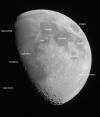 Non-Inverted Rukl Orientation |
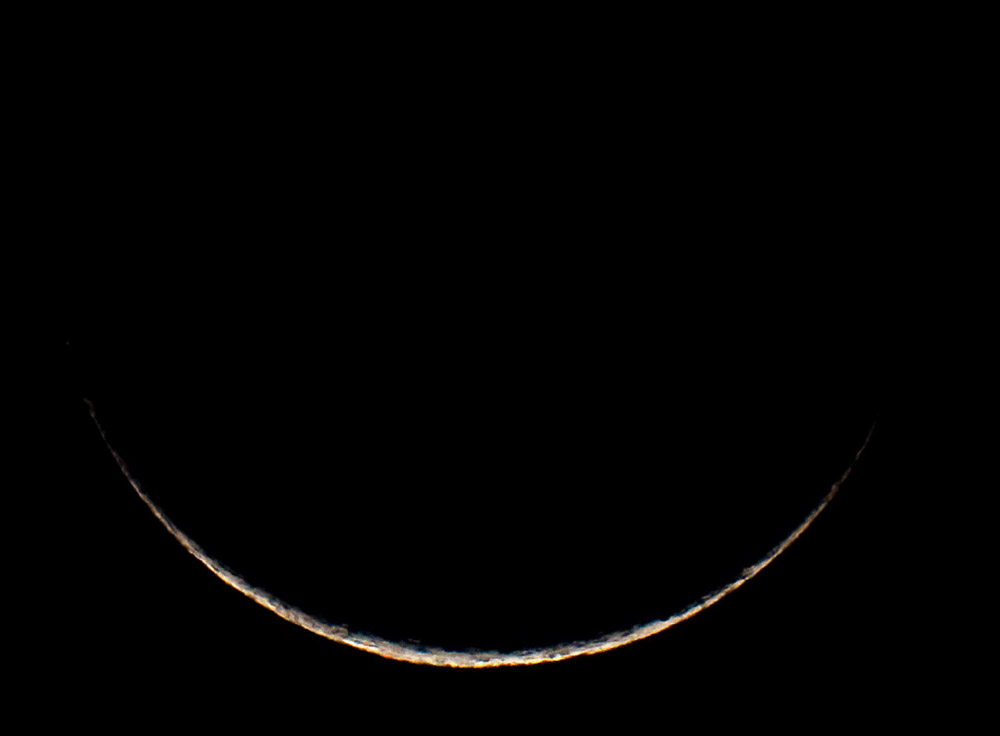
March 2008. "The Sky" says this is 2.4% illuminated, somewhere near 30 hours old.
Astronomy Pictures: Dick Locke's Astrophoto Gateway page....
Copyright © 1998-2009, Dick Locke. All Rights Reserved.
Contact and Image Use Information
3/30/2004 Moon Photography Notes: Seeing was excellent this night. I'm to the point where I don't bother shooting the moon unless seeing is excellent (as I know the results will be disappointing). Even so, getting a good sharp shot is kind of a crap shoot regarding seeing and focus. The great thing about the D100 is that I can see the histogram of the image right after shooting, so getting a "perfect" exposure is almost foolproof now. Beats the heck out of bracketing with film, or even trying to judge given my other digicam's picture (without a histogram).
On this image I applied curves to each RGB channel independently to increase per-channel contrast. I completely ignored what this did to the color. I then used channel mixer to blend the RGB channels into a monochrome image (channel mixer allows you to choose how much of each RGB channel to mix into the final image). After that, I converted to LAB to sharpen the luminance channel with a pretty heavy hand, and back to RGB for the web.
So the combination of good glass, exposure, camera, seeing, focus, and processing came together on this one! (Not to mention, I shot this when the moon was at the zenith, and with a refractor I was literally laying on my back on my deck centering and focusing this shot! I couldn't quite see laying flat, so had to do some crunches to get close enough to see the viewfinder well. So there was physical effort as well...)